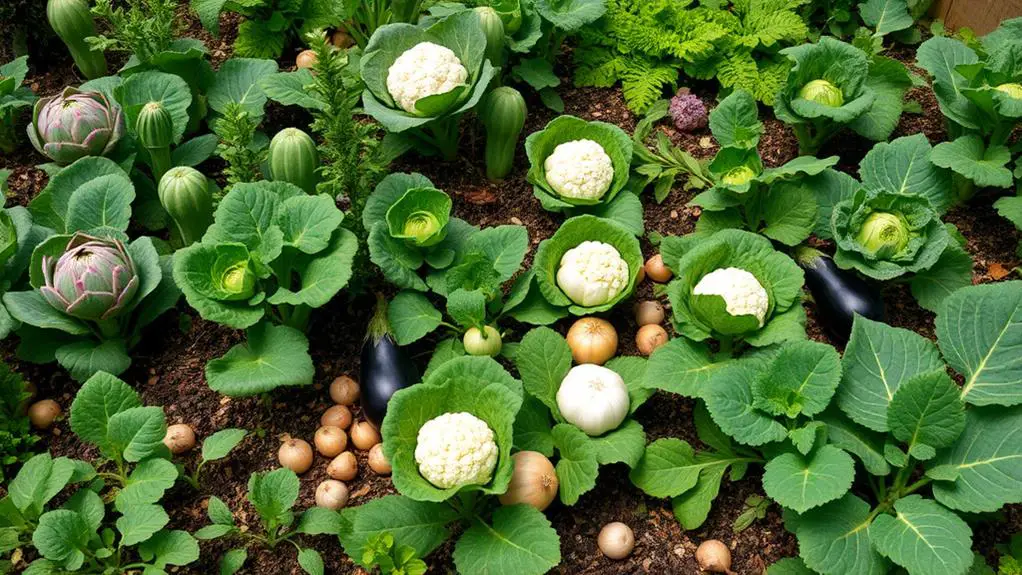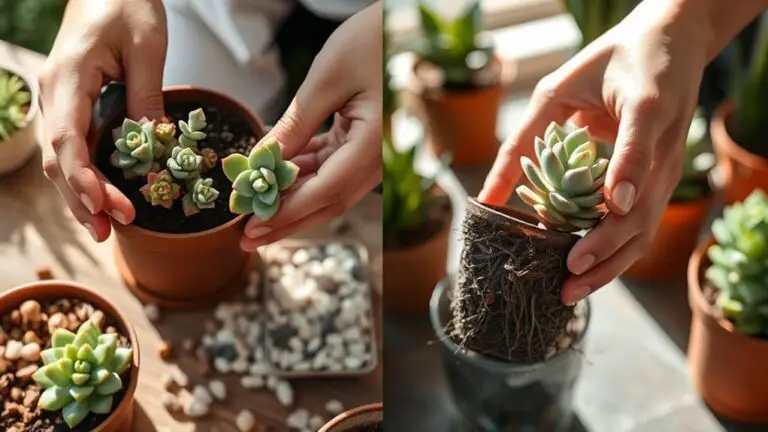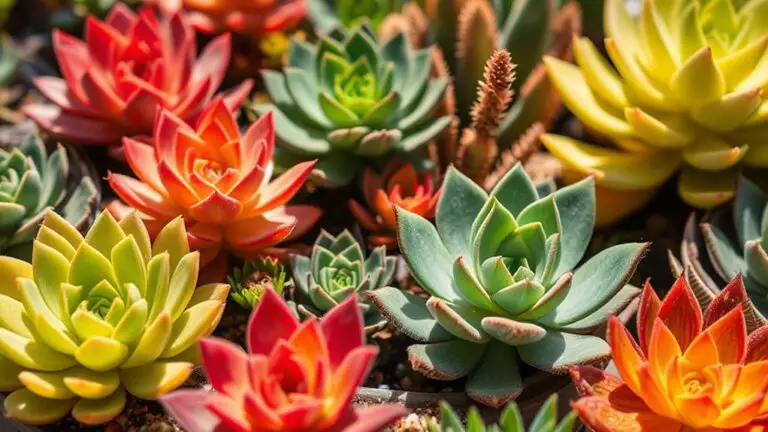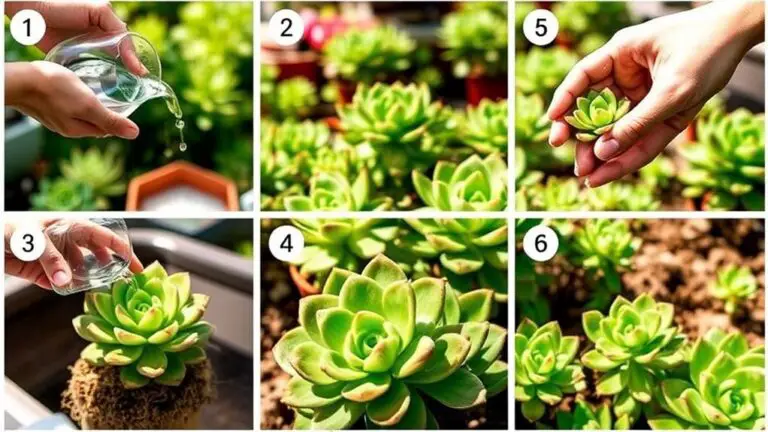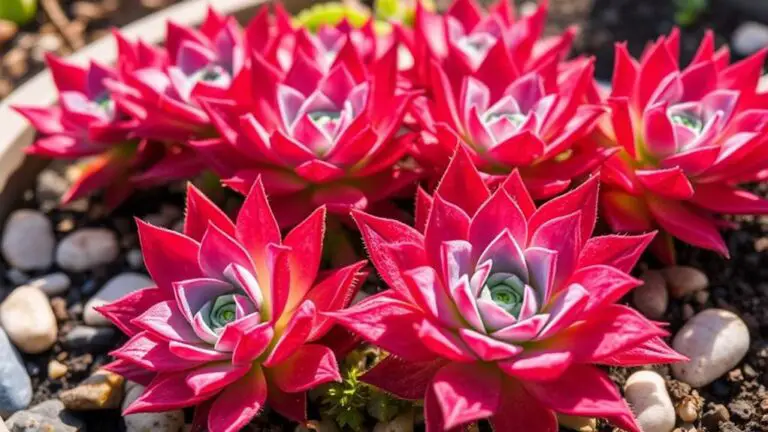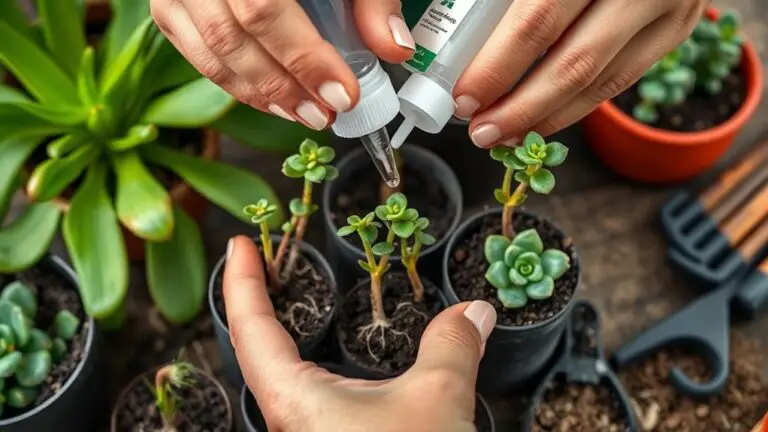The Top 10 Most Difficult Vegetables to Grow
When you decide to take on the challenge of growing your own vegetables, it's crucial to know which ones might test your skills the most. The top ten most difficult vegetables to cultivate aren't just tricky because of their specific soil and temperature needs; they also demand consistent maintenance and patience. Asparagus, artichoke, and celery are just a few examples that might leave you questioning your gardening prowess. Do you have what it takes to nurture these demanding plants and enjoy a bountiful harvest? Discover the unique challenges each vegetable presents.
Asparagus
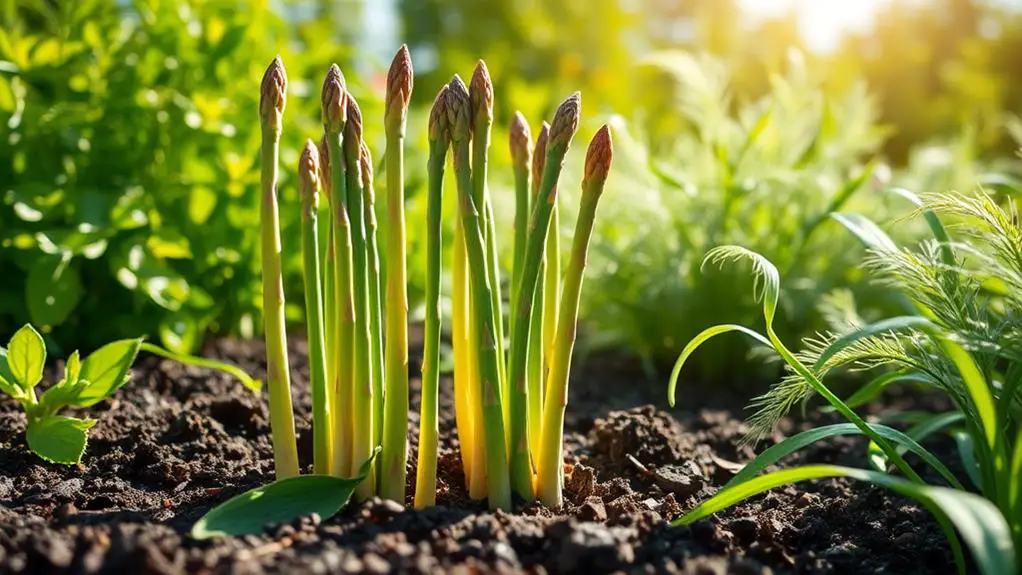
Asparagus is a vegetable that demands patience and dedication from gardeners. It takes 2-3 years to establish before you can finally harvest it, making it a long-term commitment.
To give your asparagus the best start, plant it in well-draining soil. Sandy soil works well because it guarantees the roots don't sit in water, which can cause them to rot.
You'll also need to find a spot in your garden that gets full sun exposure, about 6-8 hours daily. This helps the asparagus grow strong and healthy.
Be prepared to do some regular weeding, as asparagus is very sensitive to weeds. Keeping the area clean will guarantee that your plants don't have to compete for nutrients.
Unfortunately, asparagus is prone to pests, particularly asparagus beetles. These pests can damage your crop if you don't manage them properly. Inspect your plants regularly and take action if you see any signs of beetles.
Once established, asparagus can produce for up to 20 years. This means that with some upfront effort, you'll get a continuous harvest with minimal ongoing care.
Stay patient and diligent, and you'll be rewarded with fresh asparagus year after year.
Artichoke
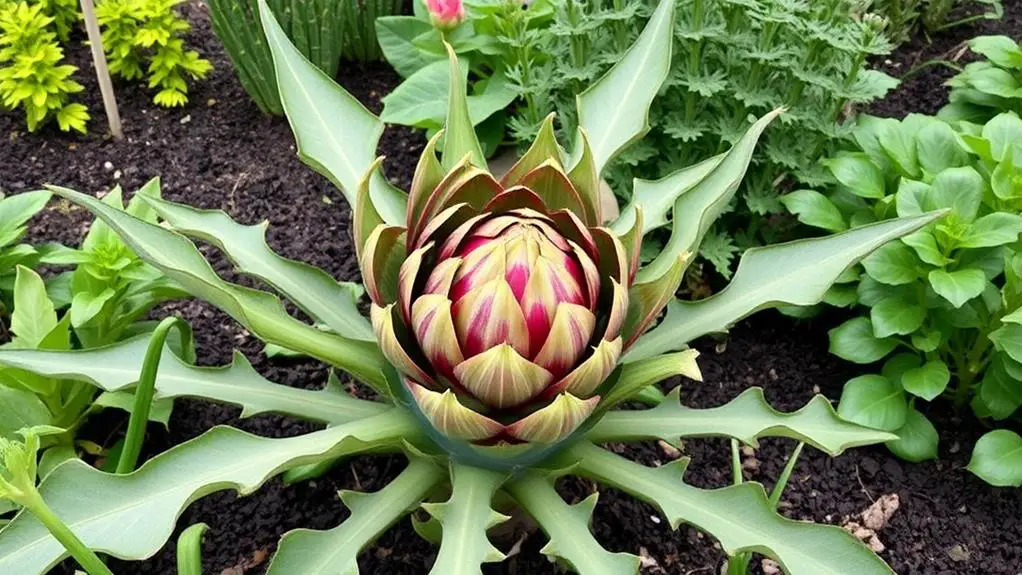
Growing artichokes can be a rewarding yet challenging endeavor, especially given their preference for warm climates and sensitivity to both cold and extreme heat. Artichokes thrive best in USDA zones 7-10, but if you live in an area with unpredictable weather, you might find them challenging to grow.
These plants need rich, well-draining soil and plenty of water because they're drought-sensitive and require consistent moisture to grow well.
Patience is key when growing artichokes. It takes 2-3 years for them to produce mature heads, so you'll need to be prepared for a long wait. During this time, you must also manage pests like aphids and snails, which can damage your crops. Vigilant pest control is essential to keep your plants healthy.
Artichokes need protection from frost, as cold temperatures can severely harm their growth and productivity. You might need to use frost covers to shield your plants during unexpected cold snaps.
Despite these challenges, growing artichokes is worthwhile because of their high nutritional value and the satisfaction of harvesting your own fresh produce. With patience and care, you can successfully grow this rewarding vegetable.
Celery
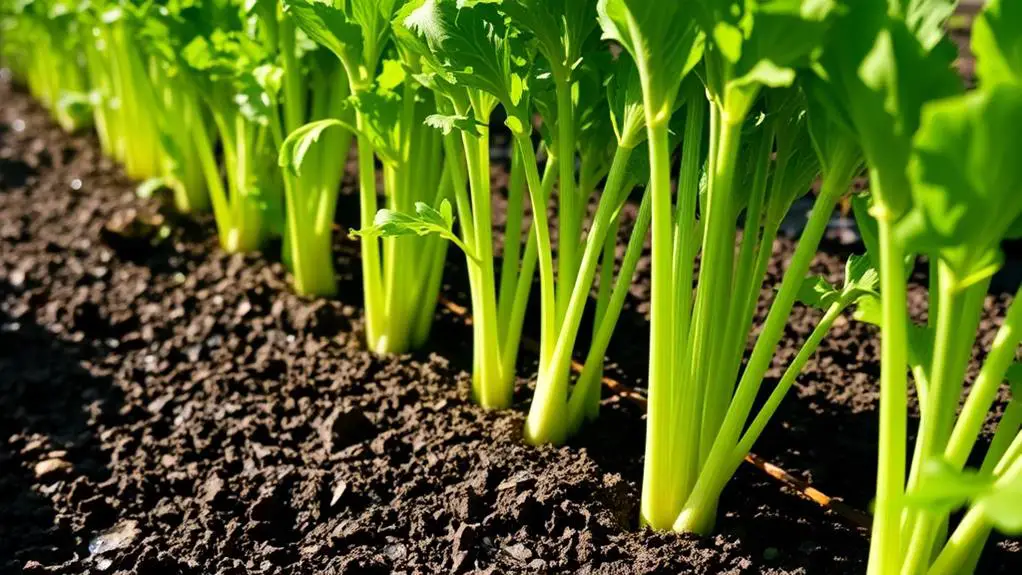
Cultivating celery can be a bit of a balancing act, requiring you to maintain a delicate equilibrium of water, soil, and temperature. Celery is sensitive to temperature fluctuations and needs a long maturation period, typically between 120-180 days. You'll need to guarantee the temperature stays ideally between 60-70°F for the best growth.
To grow healthy celery, you should focus on:
- Nutrient-rich, water-retaining loamy soil: This type of soil holds moisture well and provides the essential nutrients celery requires.
- Consistent watering: Uneven watering can make the stalks tough and bitter, so maintaining consistent moisture is vital.
- Regular monitoring for diseases: Celery is vulnerable to blight and root rot, so keep an eye out and take preventative measures to protect your plants.
Celery thrives in cooler growing conditions and is best suited for regions with mild summers. Heat stress can be a real problem, so if you live in a warmer area, consider planting celery in partial shade.
The vegetable also requires a steady supply of nutrients in the soil to grow well. Regularly check and amend your soil to keep it rich and fertile. By paying close attention to these factors, you'll increase your chances of growing delicious, crisp celery.
Cauliflower
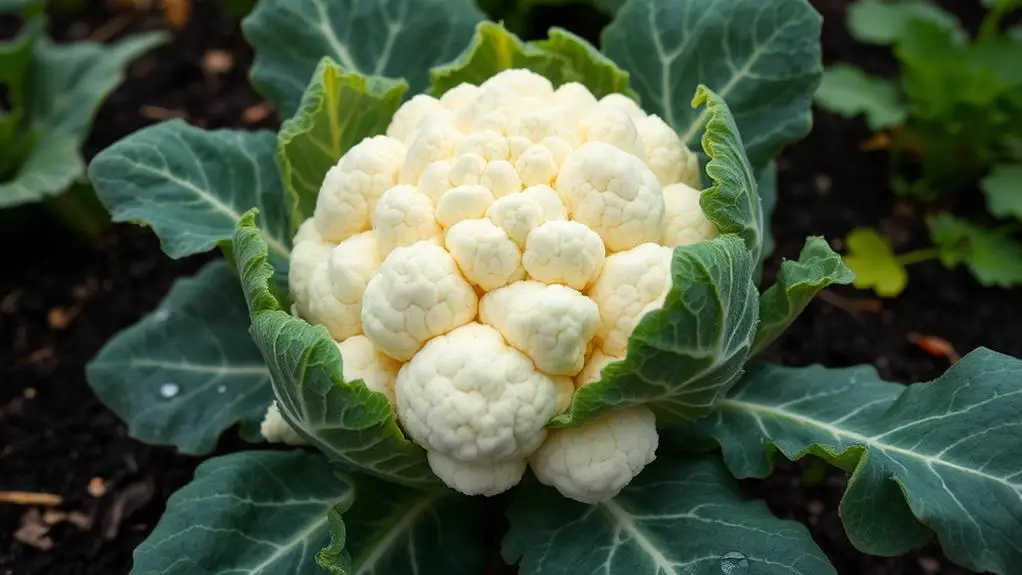
Like celery, cauliflower also demands meticulous care and precise conditions for successful growth.
It's one of those vegetables that can be hard to grow if you don't pay close attention to its needs. Start by planting your cauliflower at the right time—aim for temperatures between 75°F and cooler. If it gets too hot, your cauliflower might bolt, which means it will flower too early and won't form the heads you're looking for.
The soil is another critical factor. Cauliflower prefers well-draining, nutrient-rich soil with a pH between 6.5 and 6.8. Regular deep watering is essential to help the heads form properly.
Be prepared to give it about 70 to 100 days to reach maturity, so timing your planting is key.
Pests such as cabbage worms can be a real problem, so you'll need to keep a close eye on your plants. Regular monitoring and pest management strategies are necessary to protect your cauliflower.
Also, shading the heads from direct sunlight will help preserve their color and flavor.
Eggplant
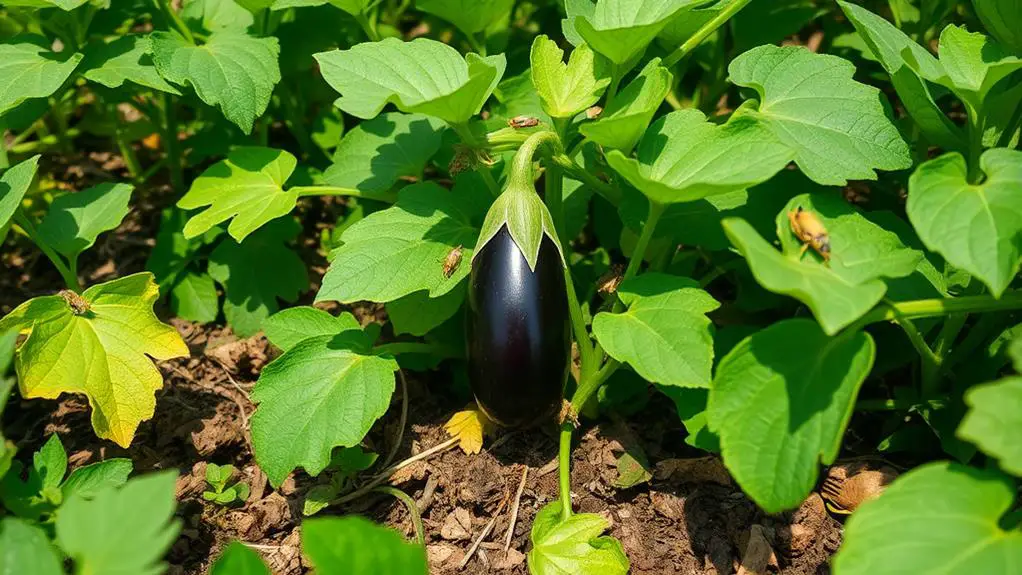
When growing eggplant, you'll need to pay close attention to the climate and pests.
Eggplants love full sun and warm weather, but they're sensitive to cold and frost, which means timing your planting is vital.
Plus, keep an eye out for flea beetles that can harm your plants, and make sure to use effective pest management strategies.
Climate Sensitivity
Eggplant's climate sensitivity makes it a challenging vegetable to grow, especially in regions with unpredictable weather. To successfully grow eggplants, you need to know a few key things about their climate needs. Eggplants thrive in warm weather, with ideal temperatures ranging between 70-90°F. They can't tolerate frost at all, making them sensitive to cold snaps.
You'll also need to guarantee they get consistent exposure to full sun, about 6-8 hours daily, for healthy growth and fruit production.
Here are some critical points to take into account:
- Temperature fluctuations: Inconsistent temperatures can lead to poor fruit set or even bitterness in the eggplants.
- High heat stress: Extreme heat can cause stress, resulting in fruit drop if the plants aren't kept moist.
- Growing season length: Eggplants need a growing season of 70-100 days, so plan carefully to align with your local climate conditions.
Eggplants are challenging to grow because they need such specific conditions. However, with careful planning and attention to their climate needs, you can still have success.
Pest Vulnerability
Growing eggplants can be quite a challenge due to their high vulnerability to pests. Flea beetles are notorious for attacking eggplant leaves, causing holes and stunting growth. This damage can severely reduce your yields. Aphids also love eggplants; they feed on the sap, leading to wilting and distortion of your plants. Another major pest is the spider mite. These tiny creatures thrive in hot, dry conditions and can cause yellowing leaves and poor fruit development.
To manage these pest problems, it's essential to implement integrated pest management (IPM) strategies. Introducing beneficial insects like ladybugs can naturally control pest populations. Regular monitoring and early detection are also key to preventing major infestations and keeping your eggplants healthy.
Here's a quick overview of common pests and their impacts:
| Pest | Impact on Eggplants |
|---|---|
| Flea Beetles | Holes in leaves, stunted growth |
| Aphids | Wilting, plant distortion |
| Spider Mites | Yellowing leaves, poor fruit development |
| Ladybugs | Beneficial, eat aphids |
| Monitoring | Early detection, prevents infestations |
Sweet Corn
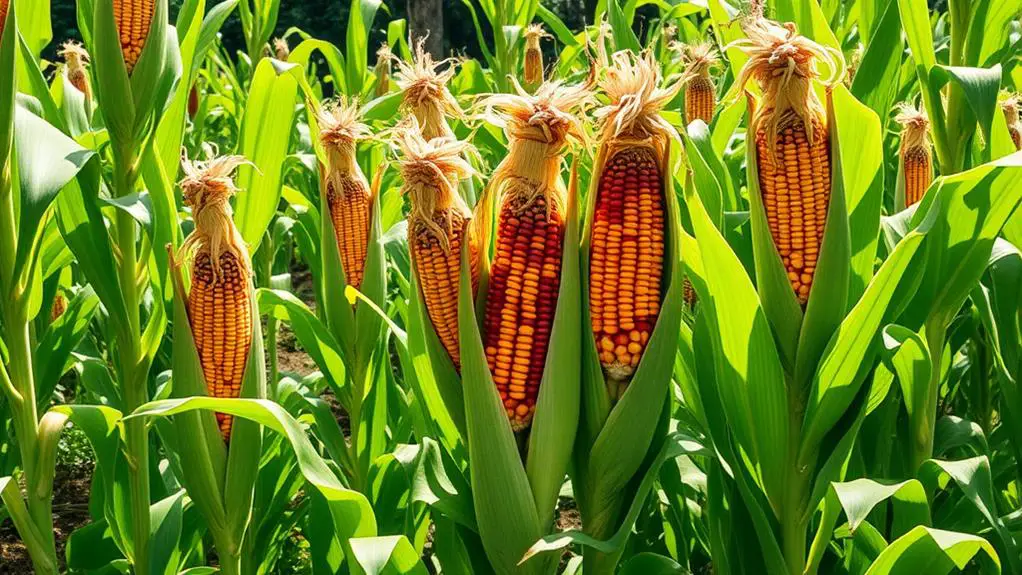
Growing sweet corn can be a rewarding but challenging endeavor.
You need to plant it in groups of at least four rows to help with pollination and guarantee you water it consistently, as it thrives in moist, rich soil.
Also, don't forget to keep an eye out for pests like corn earworms and rootworms that can harm your plants.
Pollination and Planting Density
Why is pollination so essential for sweet corn? Well, sweet corn relies on wind for pollination, meaning it needs help from the breeze to carry pollen from one plant to another. Without proper pollination, you won't get those delicious, full ears of corn.
To guarantee effective pollination, you should plant sweet corn in blocks of at least four rows. This setup increases the chances of wind successfully spreading the pollen.
Here's what you need to keep in mind:
- Planting Density: Space your sweet corn plants about 12 inches apart to allow for good airflow and sunlight exposure.
- Block Planting: Arrange your plants in blocks, not single rows, to enhance pollination efficiency.
- Timing: Sow your seeds after the last frost in spring to guarantee the soil is warm enough for proper germination.
Soil and Water Requirements
How can you guarantee your sweet corn thrives? Start with the right soil and moisture levels. Sweet corn loves rich, moist soil, so focus on keeping the soil consistently moist but not waterlogged.
It's shallow-rooted, meaning it needs at least an inch of water every week to grow well. Make sure your soil is well-draining to prevent root rot and other diseases.
To prepare your soil, mix in plenty of organic matter. This boosts nutrient availability and improves soil structure, helping your sweet corn grow strong and healthy.
Sweet corn does best in USDA zones 2 to 9, where the soil is warm enough for seeds to germinate and plants to grow. If your soil temperature is too cold, your sweet corn won't sprout well.
Maintaining the right moisture levels is key. You don't want the soil to dry out, but you also don't want it to be too wet. Checking soil moisture regularly can help you avoid these extremes.
Water your corn deeply and consistently, aiming for that perfect balance. By paying attention to these soil and water requirements, you'll set your sweet corn up for a successful growing season.
Pest and Disease Control
Tackling pests and diseases is vital for a successful sweet corn harvest. Sweet corn is particularly vulnerable to pests like the European corn borer and corn earworms, which can greatly damage the ears and reduce yields. To keep your sweet corn healthy, you'll need to stay vigilant and act quickly.
Regular monitoring for signs of pest activity, such as holes in the leaves or damaged ears, is essential. Integrated Pest Management (IPM) strategies are especially effective in pest and disease control. These strategies include:
- Crop rotation: Planting different crops each season to disrupt pest life cycles.
- Beneficial insects: Introducing natural predators like ladybugs to eat harmful pests.
- Proper spacing: Ensuring enough space between plants to improve airflow and prevent fungal infections.
Diseases like northern corn leaf blight and gray leaf spot can also affect sweet corn. To prevent these, make sure your plants have good airflow and aren't overcrowded.
If you notice an infestation, applying organic or chemical insecticides promptly can help, but always follow the label instructions for safe use.
Winter Squash
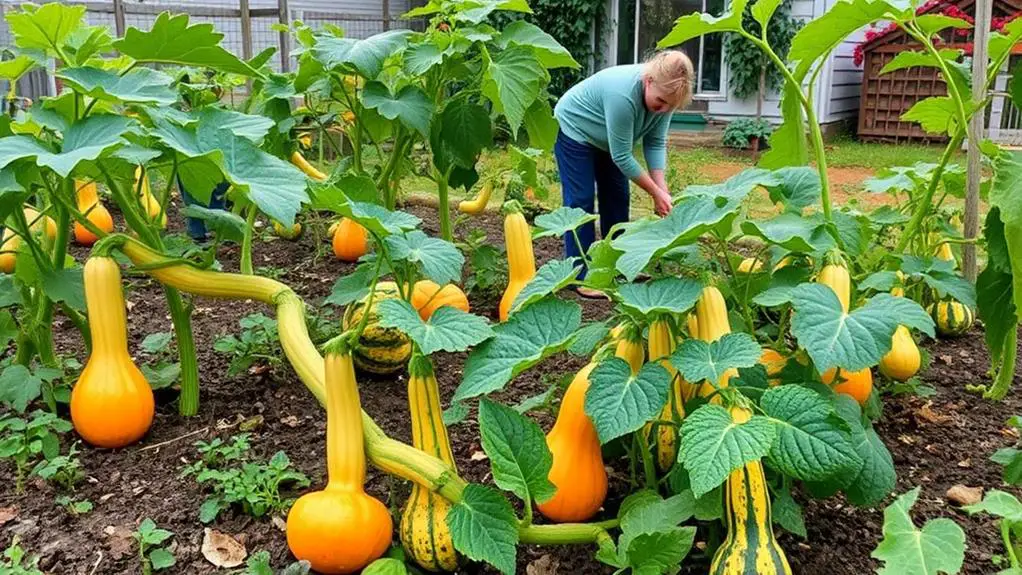
Winter squash can be a challenging vegetable to grow, largely because it demands a substantial amount of space and specific conditions to flourish. You'll need to give each plant at least a foot of space to thrive properly. This means planning your garden layout carefully, especially if you're working with limited space.
Winter squash also has a long growing season, often taking 80-120 days from sowing to harvest. This requires you to plant at the right time, usually after the last frost in spring, to guarantee the plants have enough warm days to grow.
Managing pests is another significant challenge. Winter squash is vulnerable to pests like cucumber beetles and squash bugs. These tiny invaders can cause a lot of damage, so you'll need to monitor your plants regularly and consider using organic pest control methods.
Winter squash prefers well-drained, nutrient-rich soil and regular monitoring of soil moisture is crucial to prevent rot. Make sure the plants get full sun exposure, which is essential for their growth, especially in USDA zones 3 to 11.
With careful planning and attention, you can successfully grow winter squash and enjoy a bountiful harvest.
Carrots
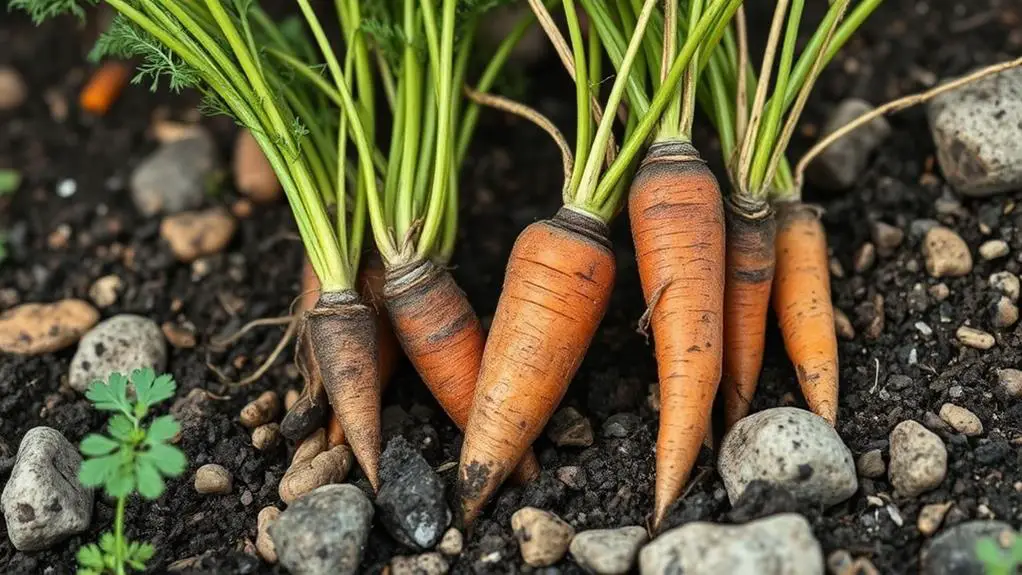
Growing carrots can be a rewarding yet challenging endeavor due to their specific soil and temperature requirements. Carrots need soil that's prepared at least 8 inches deep and preferably sandy, moist, and warm for their roots to develop properly. The tiny seeds can make spacing tricky, often leading to root tangling if you don't thin them out during growth.
To paint a clear picture, here are some key points:
- Carrots thrive best in USDA zones 3 to 11, enjoying consistent moisture and well-draining soil.
- They're sensitive to temperature fluctuations, preferring cool weather to produce sweet, tender roots.
- Carrots typically take about 70 to 80 days from sowing to reach maturity.
Timing is vital when growing carrots. Plant them during cool weather to avoid temperature stress that can affect root development.
Consistent moisture is important, but make sure the soil drains well to prevent rot. Preparing the soil properly and paying attention to spacing will help you overcome some of the difficulties.
Onion

Onions can be a bit tricky to grow because they need nutrient-rich, organic soil with a pH between 6.0 and 6.8 for their bulbs to develop well.
They also need consistent watering since their roots are short and they rely on moisture for healthy growth.
Don't worry, though—if you keep your soil in good shape and water regularly, you'll have a great start in growing strong, healthy onions.
Nutrient-Rich Soil Requirements
To successfully grow robust onions, you need nutrient-rich soil that's packed with organic matter. This type of soil supports bulb development and overall plant health. The ideal soil pH for onions is between 6.0 and 6.8, which means it should be slightly acidic to neutral. Ensuring the soil is rich in nutrients is key to getting those healthy, flavorful onions you're aiming for.
For the best results, your soil should have:
- Compost or well-rotted manure: Adding these enhances fertility and provides essential nutrients.
- Good soil drainage: This prevents root rot caused by excess moisture around the bulbs.
- Adequate moisture: Onions are short-rooted and need a consistent supply of water.
You want to make sure the soil is well-drained because poor drainage can lead to root rot, a common problem for onions.
Adding organic matter like compost or well-rotted manure won't only improve soil fertility but also help with moisture retention and drainage.
Consistent Watering Necessities
When it comes to growing onions, ensuring they get consistent watering is essential for healthy bulb development. Onions need about 1 inch of water per week during their growing season. This regular irrigation helps maintain soil moisture and supports steady growth. Without it, you might see issues like splitting or stunted growth, which nobody wants.
To keep things running smoothly, make sure your soil stays evenly moist but not waterlogged. Overwatering can lead to root rot and other diseases. A good tip is to use mulch around your onions; it helps retain soil moisture and cuts down on how often you need to water. Plus, mulch can keep weeds at bay, giving your onions a better chance to thrive.
Timing your watering is also vital. The best time to water onions is in the morning. This allows any excess water to evaporate during the day, reducing the risk of fungal diseases.
Stick to these consistent watering necessities, and you'll be on your way to growing healthy, robust onions. Remember, regular irrigation and balanced soil moisture are key to success. Happy gardening!
Sweet Potato
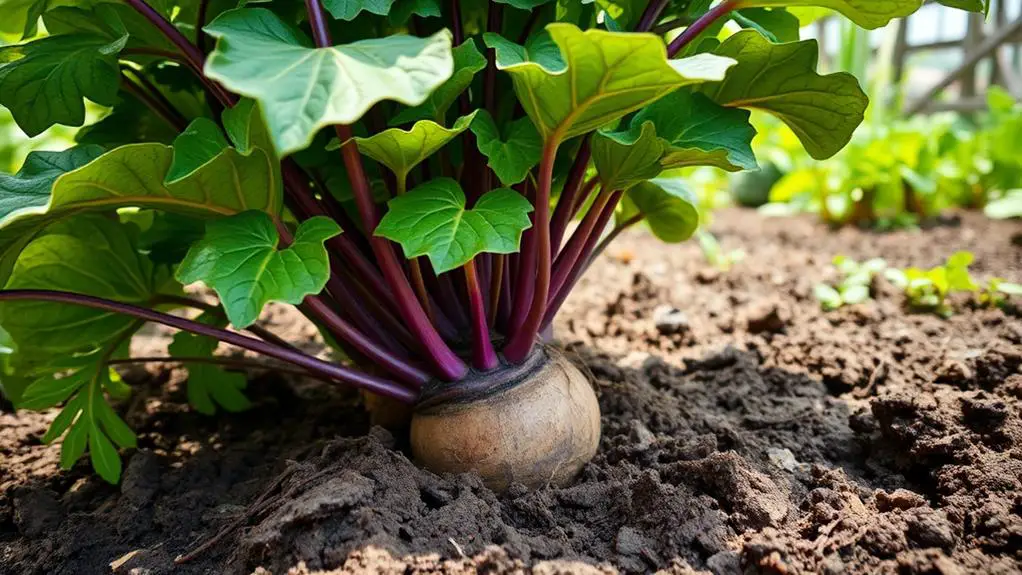
Growing sweet potatoes can be a rewarding yet challenging endeavor, especially if you're not in the ideal USDA zones 9 to 11. These vegetables need a lot of warmth and full sun exposure to thrive.
Consistency is key; sweet potatoes require consistent moisture throughout their growth cycle, which typically lasts from 90 to 150 days. You'll also need to be vigilant about pests, as sweet potatoes are often challenged by pests like sweet potato beetles and wireworms.
To help you succeed, keep these points in mind:
- Warm Weather: Sweet potatoes flourish in warm climates, making them perfect for zones 9 to 11.
- Frost Sensitivity: Plant only after the last frost date to avoid damage.
- Pest Management: Regularly check for pests and take action immediately.
Frequently Asked Questions
What Are the Most Difficult Vegetables to Grow?
You'll find asparagus, artichokes, celery, cauliflower, and sweet potatoes among the toughest vegetables to grow. They require specific conditions, long growing periods, and constant care, making them quite a challenge for even seasoned gardeners.
What Are Hard Vegetables?
Hard vegetables are those tricky ones that need specific conditions and constant care. They often struggle with temperature changes, soil needs, pests, and diseases. Examples include artichokes and celery. You'll need patience and advanced skills to grow them.
What Is the Most Difficult Plant to Grow?
You'll find wasabi the most difficult plant to grow. It demands a rocky riverbed, high humidity, and patience due to its 1-2 year growth cycle. It's sensitive to nutrients and prone to diseases and pests, complicating cultivation.
What Vegetables Take the Longest to Grow?
You'll find asparagus and artichokes among the longest to grow, taking 2-3 years to harvest. Celery also demands patience, needing 120-180 days. These vegetables require specific conditions and lots of care to thrive.
Conclusion
Growing these challenging vegetables might seem intimidating, but with patience and the right care, you can do it! Remember, it's all about learning and improving. Pay attention to soil conditions, keep up with watering, and watch out for pests. Your hard work will pay off when you finally harvest those delicious vegetables. Don't get discouraged if things don't go perfectly the first time. Keep trying, and you'll become a better gardener with each season! Happy gardening!

